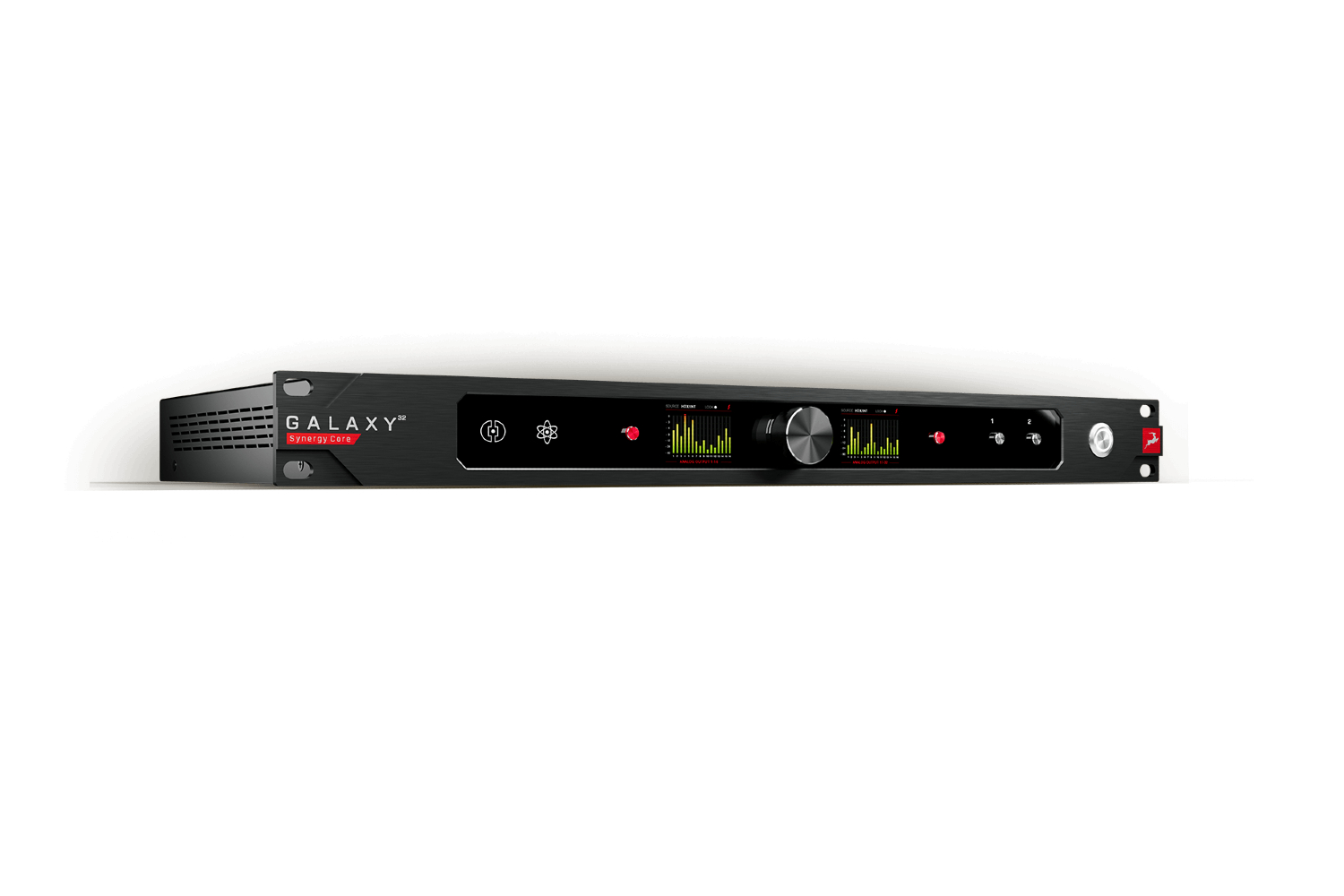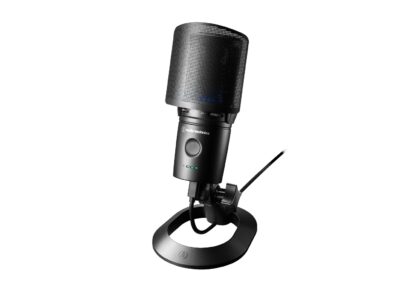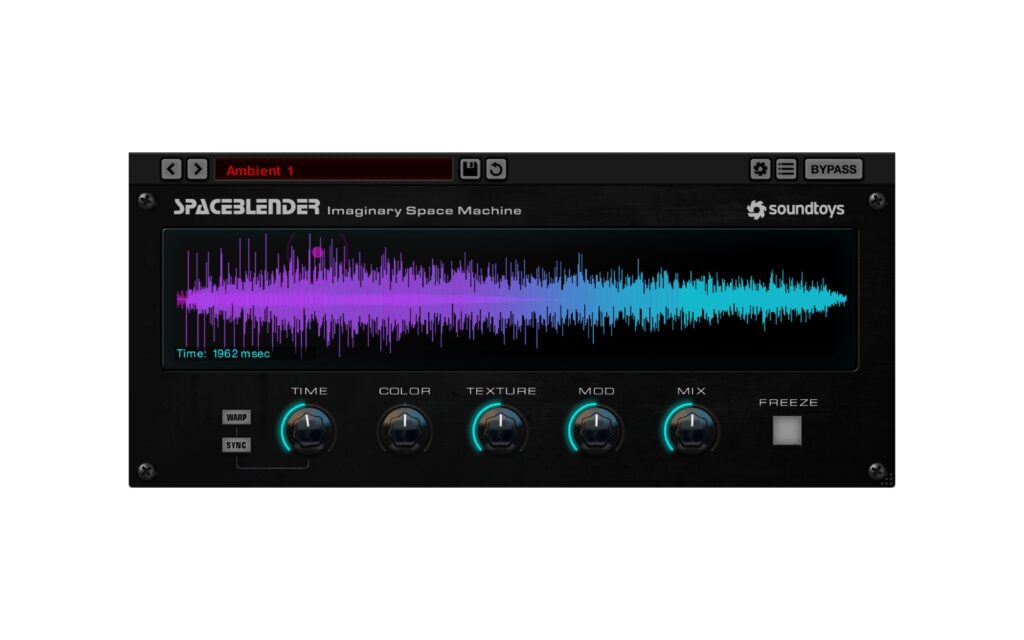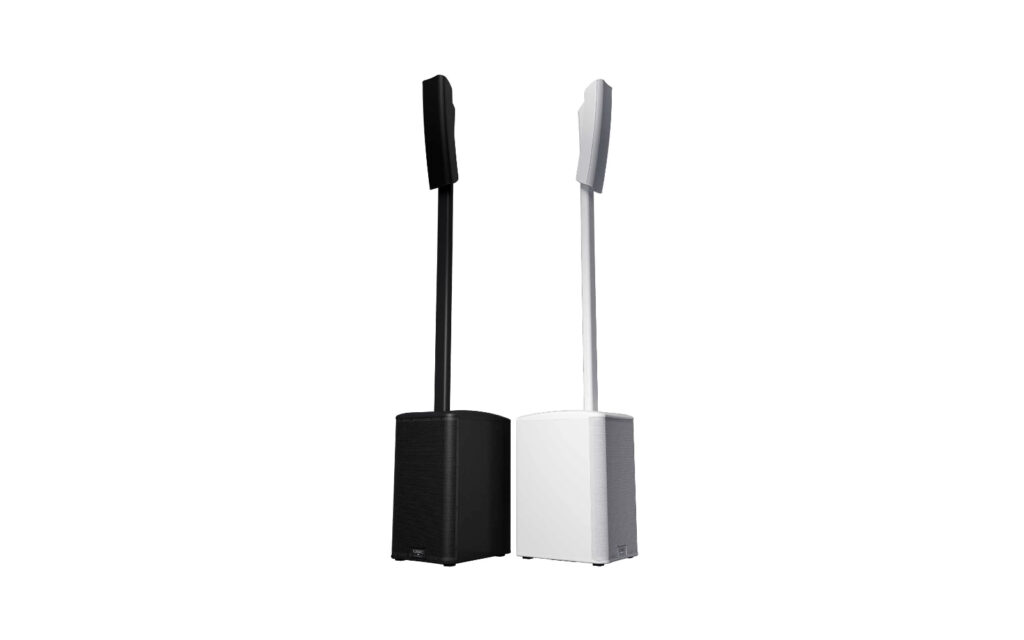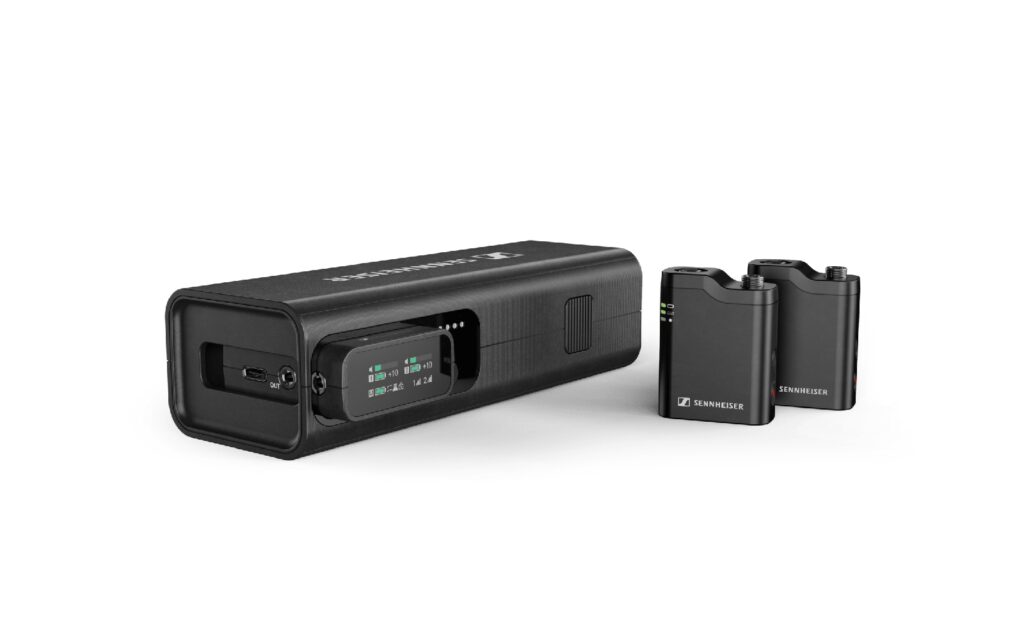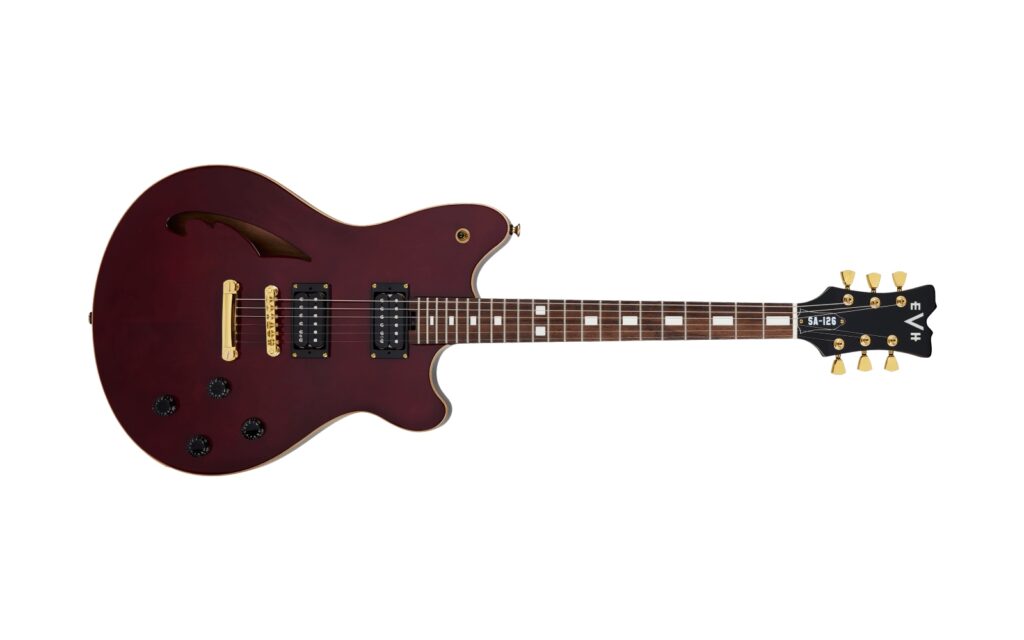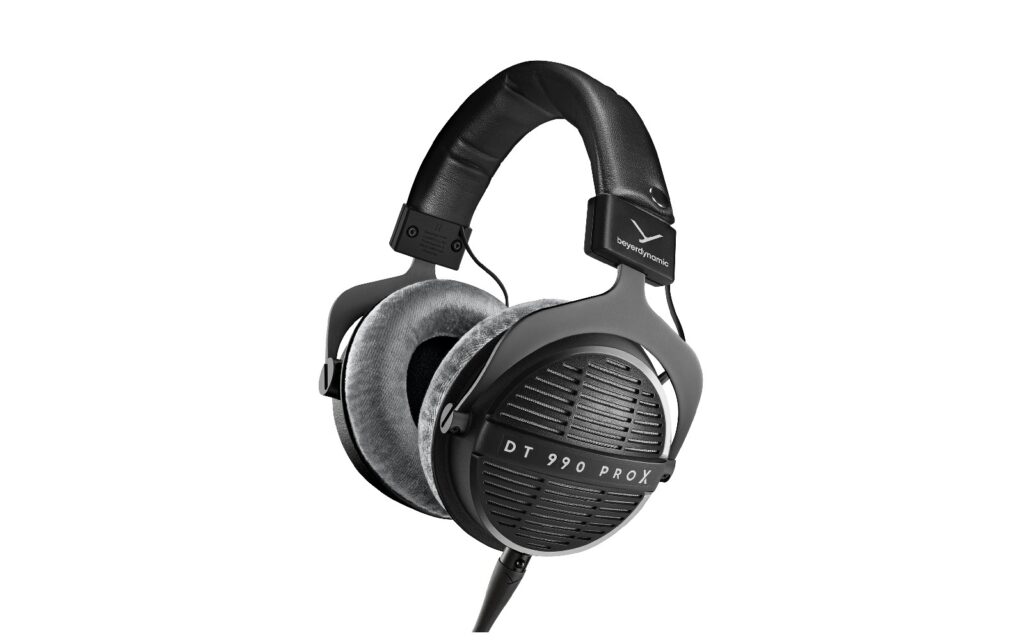Edits by Mixdown staff
Antelope Audio Galaxy 32 Synergy Core | Antelope Audio | Enquire for pricing
Having pioneered some of the most revered audio clocking devices on the market, as well as having left a considerable mark on the rapid evolution of modern audio interfaces as we know them, it should come as no surprise that Antelope Audio’s new Galaxy 32 Synergy Core is an interface that is categorically packed to the brim with features, but also bears the kind of forward thinking approach to routing and integration that is sure to see it become an obvious choice across multiple disciplines within the broader audio space.
Read more gear reviews here.
A studio product through and through (but with more than a passing nod to the world of install audio and AoIP, where integration, scalability and flexibility of routing are paramount) the Galaxy 32 Synergy Core combines the kind of pristine audio and conversion quality one would expect from a brand as closely aligned with the professional studio as Antelope, but with an additional layer of practical application that sees it surpass many of its contemporaries – particularly in regards to ATMOS and immersive integration.
This wealth of connectivity is immediately apparent the minute you glance at the rear of the Galaxy 32’s demure 1U chassis, with the majority of professional protocols and connections being represented here. The eight 25 pin D-sub connectors take care of all 32 analogue I/O (that’s 32 in / 32 out) for easy connection of D-sub snakes to external pres, outboard racks and/or analogue console, or whatever analogue I/O one might have in a given setup. An additional 8 channels of ADAT are also available, for even further expansion, and of course, for a company so steeped in clocking and synchronisation, the obligatory BNC word clock connections.
Where this particular unit travels to a galaxy far far away from other interfaces (it’s called the Galaxy 32 – a Star Wars reference was a must) is in its sheer amount of digital connectivity. The 64 channels of optical MADI might not come as a complete revelation to some, but where this unit really finds its stride (and where it effortlessly blurs the line between Studio and Network Audio) is in its ability to transmit 64 channels of DANTE (with redundancy) and 64 channels of Avid’s proprietary HDX via two Digi Link ports for running and controlling Pro Tools. All-in-all a whopping 598 channels of I/O are available to run simultaneously which is just nuts! Not only this, but the enhanced workflow flexibility and scalability that this level of connectivity affords is nothing short of astounding. In fact, you may never need to unplug anything ever again.
This is particularly apt when we take into account the increasingly sophisticated immersive and atmos setups currently finding their way into the broadcast and post production space worldwide. For these kinds of applications, the Galaxy 32 is the perfect centre of operations, with enough scalability and flexibility of routing to handle even the most complex of monitoring applications, simultaneously future-proofing users for whatever multichannel setup might be required down the line.
The dedicated surround tab within the control panel is an absolute game changer and is a world all of its own turning the software control panel into a virtual speaker controller for surround and immersive formats. Surround monitoring from stereo through to 5.1 surround right through to a mammoth 9.1.6 ATMOS configuration are all available for selection list and displayed in the virtual room window. Each speaker in any given setup has its own settings for gain, delay, EQ and crossover applied to reach the recommended Dolby spec. This tab, combined with the routing matrix makes Monitoring config so incredibly easy, simultaneously monitoring and sending signal from a DAW direct to the Dolby Renderer via whichever connectivity your system requires. All the analogue and digital connectivity really comes into its own for a large immersive system.
It’s not just those working in immersive who benefit from the Galaxy 32’s onboard flexibility and foresight; for the music makers, the extensive I/O and miraculous control and routing capabilities naturally allow for a whole host of new and highly optimised workflows and technical configurations, designed to make life that much easier.
Take, for example, the ability to connect to Pro Tools via the HDX ports and then another DAW via Thunderbolt, in turn allowing for seamless, streamlined workflow between say, a songwriting session in Logic Pro X, and a main mix session in Pro Tools. Or simply being able to quickly bounce out sessions between DAWs, without having to close one, reopen the other and bounce out a missing track (we’ve all been there). It’s little timesavers like this that are the hallmark of the Galaxy 32 and believe me, they accumulate quickly!
As you can probably imagine, the ability to simultaneously handle this much I/O, conversion and internal routing is undoubtedly going to require some heavy duty processing power and needless to say, the Galaxy 32 more than delivers in this regard.
With six dedicated DSP chips and two FPGA processors housed within its brushed metal chassis, the Galaxy 32 handles this and then some, also allowing for 128 synergy core effects to run simultaneously, either via hardware inserts or via the software control panel.
The plugins themselves are both powerful and highly musical, with the added bonus of being utilised in real time with ultra low latency whilst tracking, enhancing production workflow and allowing sounds to be committed to on the way in. An abundance of hardware modelled EQ, dynamics processors and effects are all available and sound fantastic.
The aforementioned virtual patch bay needs some discussion, as it’s by far one of the most sophisticated integrated software control panels in any interface I’ve come across. I’m sure existing Antelope Audio users will appreciate how good they have it here, with the ability to route signals to multiple places via a virtual patch with ease – allowing for near endless ways to configure a system. For someone like myself who appreciates colour coding, the dedicated colouring for each of the connectivity types available within Galaxy 32 is great too, so at a glance, you can very easily see where signals are being sent and received.
This also lends the Galaxy 32 to being extremely well suited to applications outside of the studio and into larger scale live rigs and installations, which is where the MADI and DANTE ports really come into play, being utilised and easily integrated into any existing MADI or Dante ecosystem. This is particularly handy when we take into account the increased prevalence of networked audio in the commercial studio space, not to mention its continued dominance in multi space venues and educational facilities.
To think that we have come this far in a review of an audio product without actually mentioning the sound of the product might seem remiss to some, but in the case of the Galaxy 32, its essence really lies in its seemingly effortless ability to imply (and enable) smoother creative workflow. That’s not to say that its clocking, conversion and audio engine are anything less than stellar – on the contrary, the pristine sound quality of the Galaxy 32 stands alongside the very best in the space. Rather, it’s the remarkable level of physical connectivity, and the ability to configure it quickly, that launches the Galaxy 32 into the stratosphere. With the addition of the new surround tab, you’d be hard pressed to find a scenario and system configuration that this slick interface won’t be able to handle.
A note from the manufacturer:
Antelope Audio now offer a remote controller for the Galaxy 32 / forthcoming Orion 32 Gen 4 – the MRC (short for Multichannel Remote Controller). The layout of this advanced monitor controller mirrors all major controls of the system for a smooth and intuitive workflow, thanks to fast preset recall and streamlined multichannel functionality. The MRC is available to ship now. For more information, head to https://en.antelopeaudio.com/products/mrc/
For more information on the Antelope Audio Galaxy 32 Synergy Core, head to the company’s website.
